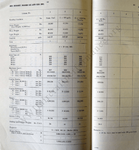davparlr
Senior Master Sergeant
An interesting little sidelight comes from my youth. I grew up a couple of miles from Sherman Field at Pensacola NAS. As such, I was expose to many wonderful air shows. One beautiful, (but hot) summer day I went to an airshow at the base. They had both a P-51D and an F8F scheduled to do demos sequentially, the P-51 was first. It took off, flew for a few minutes and landed early. The Navy announcer took pride in saying that the P-51 had over heated and that this was an example of the superiority of the air cooled F8F engine. Next the F8F took off, flew for a few minutes and landed early. Quietly, the announcer said that it had overheated.



